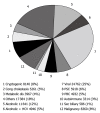Liver transplantation for alcoholic liver disease
- PMID: 20845504
- PMCID: PMC2941060
- DOI: 10.3748/wjg.v16.i35.4377
Liver transplantation for alcoholic liver disease
Abstract
Alcoholic liver disease (ALD) is the second commonest indication for liver transplantation after viral hepatitis in the United States and Europe. Controversies surround the indications and allocation of scarce and expensive resource for this so called self inflicted disease. Controversies stem from the apprehension that alcoholic recipients are likely to relapse and cause damage to the graft. There is a need to select those candidates with lower risk for relapse with the available predictive factors and scores. Substance abuse specialist and psychiatrists are mandatory in the pre-transplant evaluation and in the post-transplant follow-up. There is conflicting evidence to support a fixed period of pretransplant abstinence, although most units do follow this. Alcoholic hepatitis (AH) continues to be a contraindication for transplantation, however there is a need for further research in this field as a subset of patients with AH who do not respond to medical treatment, have high early mortality and could benefit from transplantation. One year, 3-year, and 5-year survival post-transplant is similar for both ALD and non-ALD recipients. The incidence of post-transplant rejection and retransplantation is also similar to other recipients. ALD with viral hepatitis especially hepatitis C virus leads to a more aggressive liver disease with early presentation for transplantation. ALD patients are more prone to develop de-novo malignancy; this is attributed to the long term effect of alcohol, tobacco combined with immunosuppression. Post-transplant surveillance is important to detect early relapse to alcoholism, presence of de-novo malignancy and treat the same adequately.
Figures





Similar articles
-
Liver transplantation and alcoholic liver disease: History, controversies, and considerations.World J Gastroenterol. 2018 Jul 14;24(26):2785-2805. doi: 10.3748/wjg.v24.i26.2785. World J Gastroenterol. 2018. PMID: 30018475 Free PMC article. Review.
-
Challenges in transplantation for alcoholic liver disease.World J Gastroenterol. 2014 Jul 7;20(25):8033-9. doi: 10.3748/wjg.v20.i25.8033. World J Gastroenterol. 2014. PMID: 25009374 Free PMC article. Review.
-
Negative outcomes after liver transplantation in patients with alcoholic liver disease beyond the fifth post-transplant year.Clin Transplant. 2014 Oct;28(10):1112-20. doi: 10.1111/ctr.12427. Epub 2014 Aug 22. Clin Transplant. 2014. PMID: 25059535
-
Post-transplant Outcomes of Persons Receiving a Liver Graft for Alcoholic Liver Disease.Alcohol Alcohol. 2018 Mar 1;53(2):157-165. doi: 10.1093/alcalc/agx100. Alcohol Alcohol. 2018. PMID: 29293880 Review.
-
Liver transplantation in alcoholic liver disease current status and controversies.World J Gastroenterol. 2013 Sep 28;19(36):5953-63. doi: 10.3748/wjg.v19.i36.5953. World J Gastroenterol. 2013. PMID: 24106395 Free PMC article. Review.
Cited by
-
Alcohol-associated liver disease: A review on its pathophysiology, diagnosis and drug therapy.Toxicol Rep. 2021 Feb 19;8:376-385. doi: 10.1016/j.toxrep.2021.02.010. eCollection 2021. Toxicol Rep. 2021. PMID: 33680863 Free PMC article. Review.
-
New Indications for Liver Transplantation.J Clin Med. 2021 Aug 28;10(17):3867. doi: 10.3390/jcm10173867. J Clin Med. 2021. PMID: 34501314 Free PMC article. Review.
-
Recent advances in alcohol-related liver disease (ALD): summary of a Gut round table meeting.Gut. 2020 Apr;69(4):764-780. doi: 10.1136/gutjnl-2019-319720. Epub 2019 Dec 26. Gut. 2020. PMID: 31879281 Free PMC article. Review.
-
Skin cancer in immunosuppressed transplant patients: Vigilance matters.World J Hepatol. 2015 Apr 8;7(4):717-20. doi: 10.4254/wjh.v7.i4.717. World J Hepatol. 2015. PMID: 25866609 Free PMC article.
-
Acute alcoholic hepatitis, end stage alcoholic liver disease and liver transplantation: an Italian position statement.World J Gastroenterol. 2014 Oct 28;20(40):14642-51. doi: 10.3748/wjg.v20.i40.14642. World J Gastroenterol. 2014. PMID: 25356027 Free PMC article. Review.
References
-
- McCullough AJ. Alcoholic liver disease. In: Schiff ER, Sorell MF, Maddrey WC, editors. Schiff’s disease of the liver. Philadelphia: Lippincott Williams & Wilkins; 1999. pp. 941–971.
-
- Hoofnagle JH, Kresina T, Fuller RK, Lake JR, Lucey MR, Sorrell MF, Beresford TP. Liver transplantation for alcoholic liver disease: executive statement and recommendations. Summary of a National Institutes of Health workshop held December 6-7, 1996, Bethesda, Maryland. Liver Transpl Surg. 1997;3:347–350. - PubMed
-
- Belle SH, Beringer KC, Detre KM. Liver transplantation for alcoholic liver disease in the United States: 1988 to 1995. Liver Transpl Surg. 1997;3:212–219. - PubMed
-
- Neuberger J, Schulz KH, Day C, Fleig W, Berlakovich GA, Berenguer M, Pageaux GP, Lucey M, Horsmans Y, Burroughs A, et al. Transplantation for alcoholic liver disease. J Hepatol. 2002;36:130–137. - PubMed
-
- Pfitzmann R, Schwenzer J, Rayes N, Seehofer D, Neuhaus R, Nüssler NC. Long-term survival and predictors of relapse after orthotopic liver transplantation for alcoholic liver disease. Liver Transpl. 2007;13:197–205. - PubMed
MeSH terms
LinkOut - more resources
Full Text Sources
Medical

